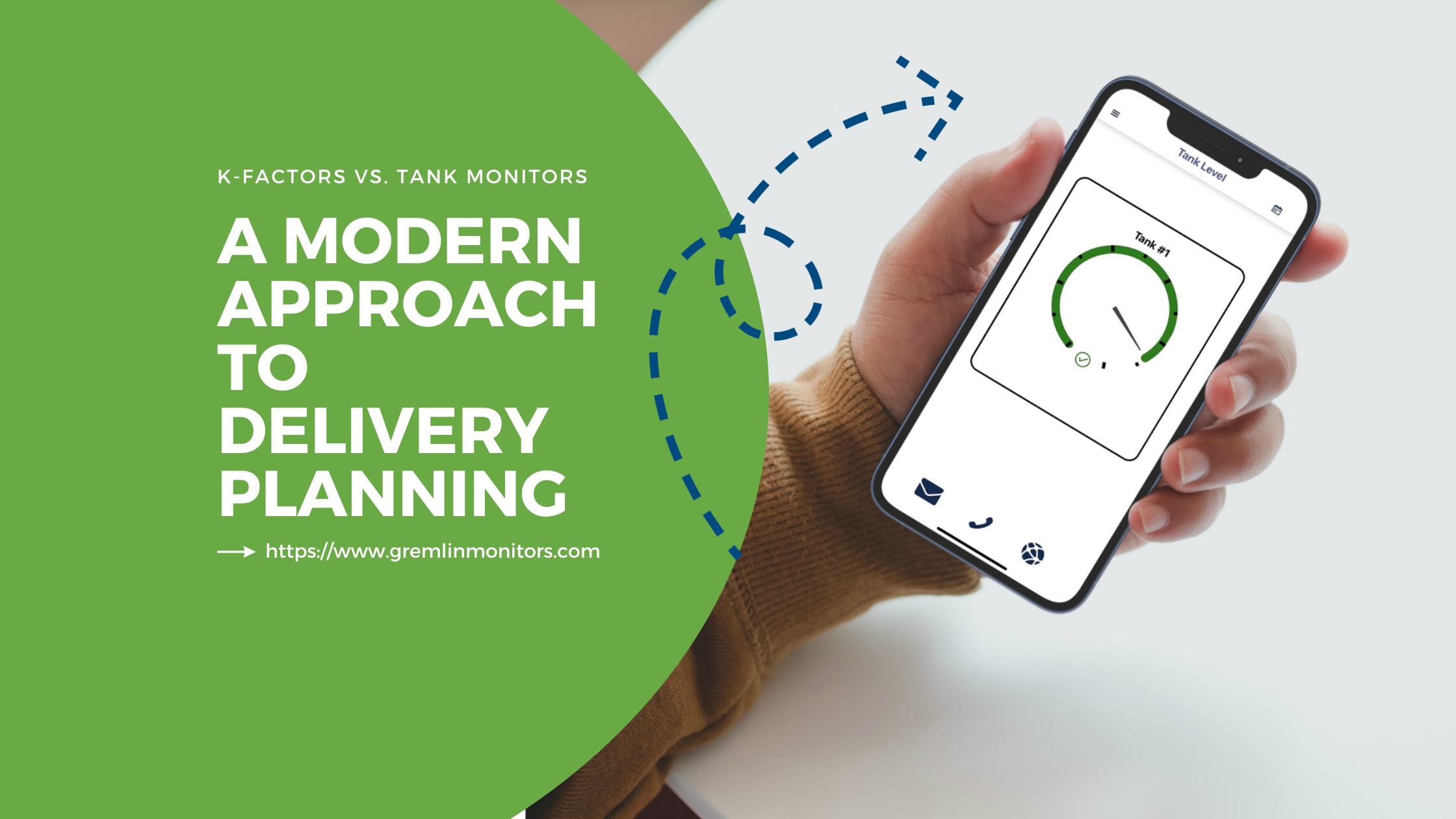K-Factors vs. Tank Monitors: A Modern Approach to Delivery Planning
We are all familiar with the famous disclaimer: “Past performance is not necessarily indicative of future results” and yet, most fuel marketers still rely heavily on K-Factors to predict, prioritize, and route their deliveries. While K-factors have been a staple within our industry, the integration of tank monitors offers a more comprehensive and efficient solution to the evolving needs of the home heating industry.
The K-factor calculation assumes each home consumes fuel at the same rate per Heating Degree Day (HDD) but ignores outside factors that directly impact consumption. K-factors show us how much fuel is consumed between past deliveries but don’t provide the means to accurately predict future consumption and (ultimately) increase profitability.
Dealers try to balance the number of deliveries made to keep the risk of runouts low, while not making too many small deliveries. Regardless of how you schedule your deliveries, the biggest variable you need to consider is “how many gallons are in a customer’s tank on any given day.”
A few years ago, we analyzed data from 1,000+ customers with 200,000 individual deliveries — here’s what we discovered:
- 39% of heating oil deliveries were either “Too close for comfort” or “too small to be profitable.
- 56% of propane deliveries were either “Too close for comfort” or “too small to be profitable.”
- 20% of heating oil deliveries were more than 50 gallons away from their planned delivery size.
- 50% of propane deliveries were more than 60 gallons away from their planned delivery size.
The difference between anticipated delivery size and actual delivery size is not the result of a faulty calculation. It’s simply because homes do not consume fuel in a way that is perfectly correlated to the weather. For example, when you only deliver to a customer six times a year, you only have six opportunities to gauge the relationship between weather and consumption.
The take-away… the best way to gauge actual consumption is to know exactly how much fuel is in a customer’s tank.
Tank monitors report consumption 365 days a year – providing more data points. This real-time data allows for more responsive decision-making, reducing the risk of unexpected runouts or excessive, small deliveries. Combining the information gathered from your tank monitors with data from your BOS and business intelligence software creates additional opportunities for you to increase efficiency, elevate customer experiences, and raise the overall profitability of your business.
When your single biggest operational expense is the cost to deliver fuel, isn’t it time to embrace all the tools and technology available?
Want to learn more? Contact one of our experts for more information or to schedule a no-obligation delivery analysis.

